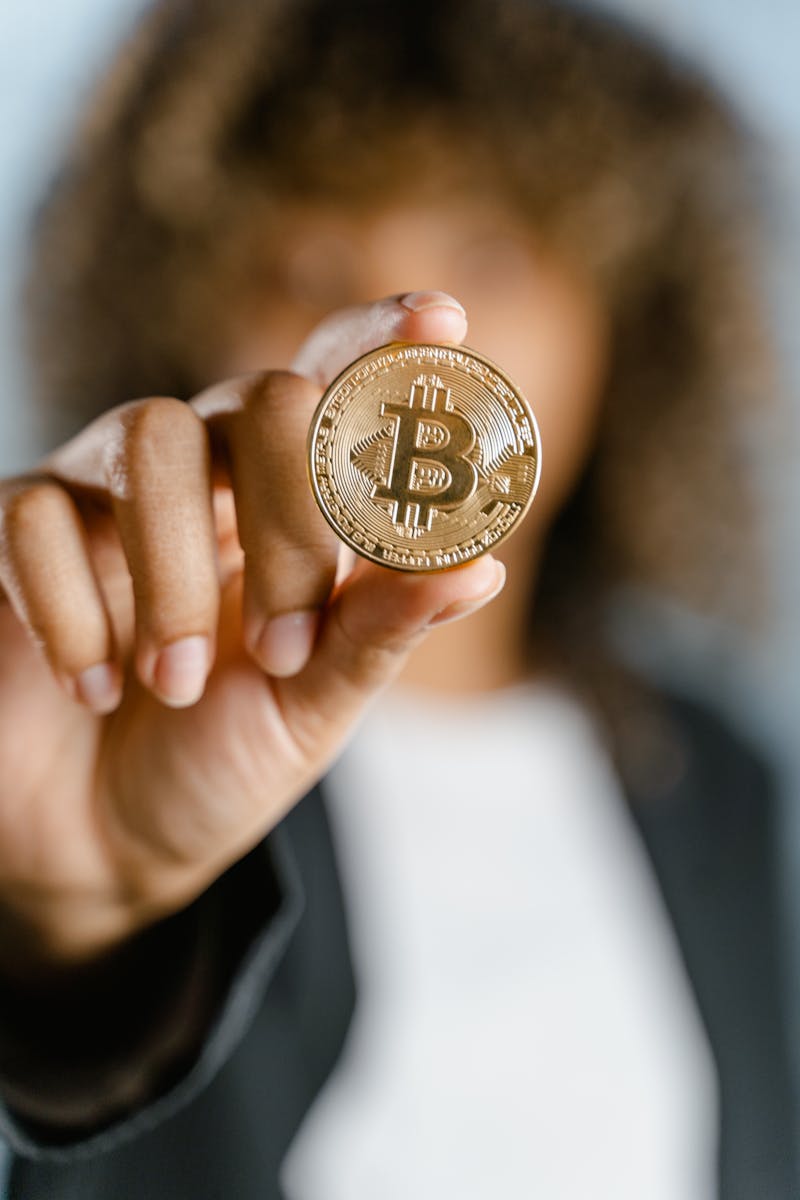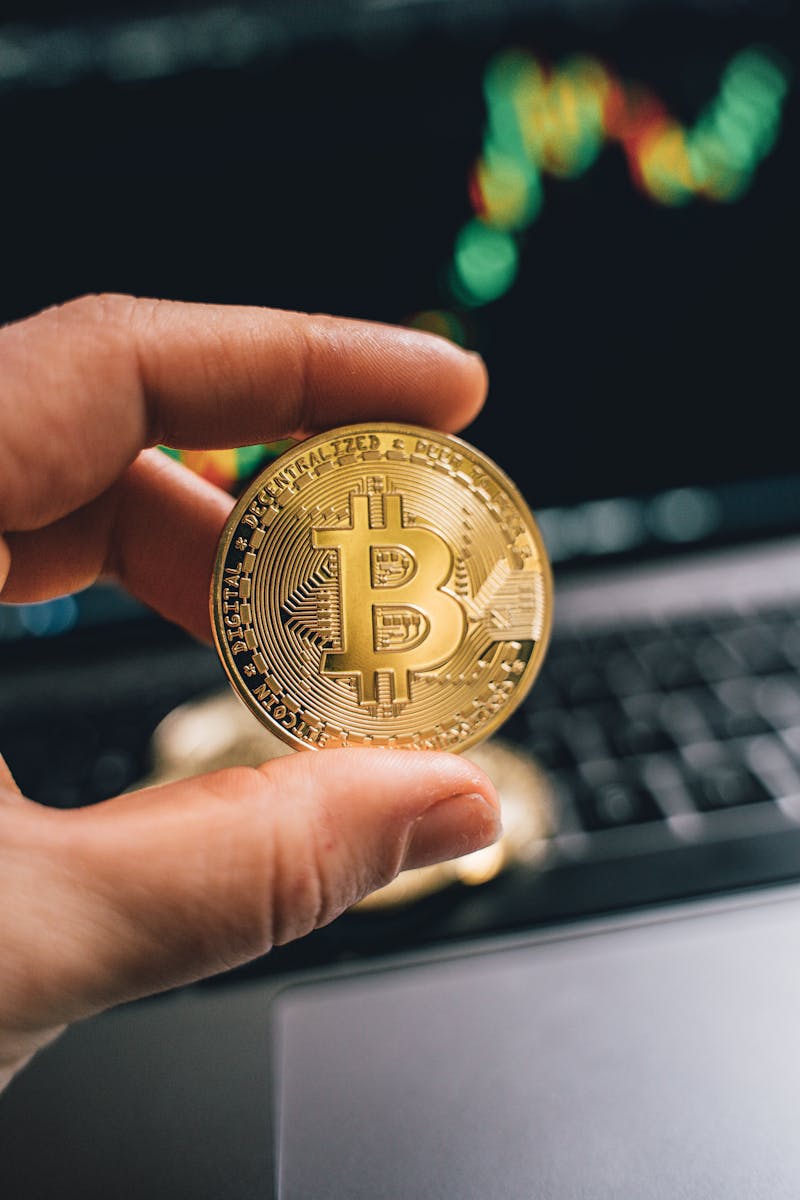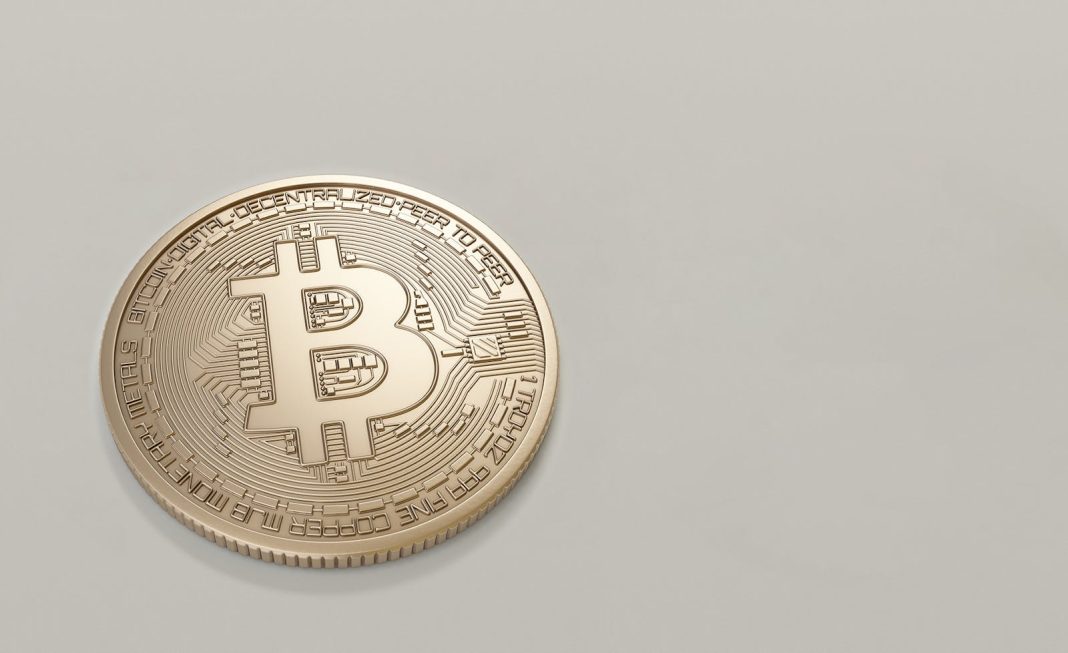In the digital age, where cryptocurrencies have become a significant part of the financial landscape, the topic of security is paramount. Bitcoin, standing at the forefront of this revolution, isn’t just a form of digital currency; it’s an asset that requires diligent safeguarding. Let’s delve into the significance of securing your Bitcoin wallet, a virtual vault for your digital riches.
The Importance of Securing Bitcoin Wallets
Imagine your Bitcoin wallet as a treasure chest. Inside, it holds not gold, but something equally precious – your Bitcoins. Just as a chest filled with gold coins would attract pirates, an unsecured Bitcoin wallet can draw the attention of cybercriminals. It’s essential to understand that in the realm of cryptocurrency, you are your bank, and securing your wallet goes beyond just protecting your money; it’s about safeguarding your financial identity. A secure wallet shields you from theft, unauthorized access, and potential financial loss. By taking proactive measures to protect your digital currency, you’re not only securing assets but also ensuring peace of mind.
Potential Risks Associated with Unsecured Wallets
Now, what risks do we face if our wallets are left unsecured? The list is quite extensive. Cyber threats such as hacking, phishing scams, and malware are just the tip of the iceberg. There’s also the risk of physical theft if you’re using a hardware wallet or paper wallet and they get into the wrong hands. Even seemingly benign actions like using a public Wi-Fi network could expose your wallet to vulnerabilities. The consequences of these risks can range from minor inconveniences to devastating financial losses. Therefore, understanding these risks is the first step towards effective prevention.
Setting the Context for the Need of Detailed Guides on Securing Bitcoin Wallets
Recognizing the plethora of threats that exist, there arises an undeniable need for comprehensive guides to navigate the complexities of Bitcoin wallet security. Why detailed guides, you might ask? Because the devil is in the details. Generic advice might help you avoid common pitfalls, but detailed instructions can equip you with the knowledge and tools to build a fortress around your digital assets. From choosing the right wallet to understanding the intricacies of private keys, each step matters. And this is where we step in, offering you those very guides, tailored to cover every aspect of wallet security, ensuring your Bitcoin stays exactly where it should – under your control.

Understanding Bitcoin Wallets
Delving into the world of Bitcoin, a fundamental step is to grasp how Bitcoin wallets function. They are not just mere places to store your digital coins; they are sophisticated tools that manage your access to the Bitcoin blockchain. Let’s unwrap the layers and understand the different types that cater to various users’ needs.
Different Types of Bitcoin Wallets
There’s a wallet for every type of Bitcoin user, from the tech-savvy to those prioritizing convenience or security. Hardware wallets, like Trezor and Ledger, are physical devices that store your private keys offline – a fortress for your digital treasure. On the other side, software wallets live on your computer or smartphone; they are more accessible but can be more vulnerable to online threats. Then, there’s the simplicity of paper wallets: a piece of paper with your keys printed on it – no hacking here, but beware of fire and water! Lastly, mobile wallets are apps on your phone, blending convenience with portability, ideal for everyday transactions but not as secure as their hardware counterparts.
Explanation of Public and Private Keys in Bitcoin Wallets
Every Bitcoin wallet contains both public and private keys. The public key is like your home address; you share it with others to receive Bitcoin. The private key, however, is akin to the key to your house – it must remain secret at all times. It’s this private key that allows you to sign off on transactions and prove ownership of your Bitcoins. Lose it, and you’re locked out; if someone else finds it, your Bitcoins might as well have a “free” sign attached.
To make transactions safer, wallets generate these keys using cryptography – a fancy way of saying they’re really, really secure. But remember, with great power comes great responsibility: securing your private key is the cornerstone of wallet security.
Importance of Understanding the Architecture of Bitcoin Wallets for Security Measures
Why bother understanding the nuts and bolts of Bitcoin wallets? Because knowing the architecture is like having a map of a treasure island; it guides you to protect your loot effectively. Comprehending how wallets operate, manage keys, and interact with the blockchain empowers you to take informed security measures. Recognize, for instance, that a software wallet connected to the internet is more exposed to cyber threats than an offline hardware wallet. This realization will influence how you allocate your funds and choose your wallet type based on the security vs. convenience trade-off that suits your needs best.
Moreover, understanding wallet architecture helps you appreciate the role of backup and recovery phrases (often called seed phrases), which are your last resort to access your Bitcoins if things go south. Knowledge of how these components work together is not just smart; it’s essential for anyone serious about keeping their Bitcoin safe.
So, whether you’re a seasoned crypto-trader or a curious newcomer, taking the time to understand the various types of Bitcoin wallets, the cryptographic keys they use, and their architectural framework is not just beneficial, it’s crucial. It lays the foundation for robust security practices that will keep your digital assets under lock and key, just as they should be.
Vulnerabilities and Risks
In the realm of Bitcoin wallets, understanding potential weaknesses is as crucial as knowing how to use them. Let’s delve into common vulnerabilities that may expose your digital treasury to cyber-thieves.
Common Vulnerabilities in Bitcoin Wallets
Phishing attacks, a deceptive attempt to obtain sensitive information by disguising as a trustworthy entity, can trick users into revealing their private keys or wallet passwords. Imagine getting an email that looks like it’s from a popular Bitcoin exchange, asking you to log in immediately to secure your account. You click the link, enter your details, and without realizing it, you’ve handed over the keys to your digital kingdom.
Malware, or malicious software, often comes disguised as legitimate applications. Once installed on your device, it can log keystrokes, steal data, and hijack your Bitcoin wallet. Social engineering, on the other hand, manipulates people into breaking normal security procedures. It’s not just about technology; it’s about tricking real people. For example, a scammer might call you pretending to be customer support, urging you to reveal security details under the guise of resolving an issue.
Risks Associated with Centralized Exchanges and Custodial Wallets
Centralized exchanges are like big neon signs to hackers, announcing where they can find a large number of Bitcoin wallets to target. Since these platforms hold the private keys to many users’ wallets, they become a single point of failure. Custodial wallets, provided by third parties, also hold your private keys. This arrangement is convenient but risky. If the custodian gets hacked, you could lose everything. It’s akin to storing all your valuables in a bank that doesn’t have a vault.
Non-custodial wallets give you control over your private keys and, consequently, your Bitcoins. However, this also means you bear the full responsibility for keeping them safe. Remember, with great power comes great responsibility.
Real-World Examples of Security Breaches in Bitcoin Wallets
Real-world examples underscore the urgency of securing Bitcoin wallets. The infamous Mt. Gox breach in 2014 is a stark reminder. Once the world’s largest Bitcoin exchange, Mt. Gox filed for bankruptcy after losing 850,000 Bitcoins to hackers. Fast-forward to 2019, and we saw the hack of Binance, one of the largest cryptocurrency exchanges, which lost over 7,000 Bitcoins to a sophisticated phishing and virus attack.
These breaches illustrate not only the financial impact but also the reputational damage and loss of trust that can be even more devastating in the long term. They show that no entity, no matter how large, is immune to attacks. These incidents serve as a wake-up call for every Bitcoin user to prioritize security.
Securing your Bitcoin wallet is not a one-time setup. It’s a continuous process of staying alert and being aware of the evolving threats in the landscape. By recognizing the vulnerabilities and understanding the risks, you’re better equipped to shield your digital assets from the prying eyes of cybercriminals.
Best Practices for Securing Bitcoin Wallets
Having delved into the vulnerabilities and risks that plague Bitcoin wallets, it’s clear that adopting best practices for securing these wallets is not just recommended; it’s essential. Let’s explore some of the most effective strategies to keep your digital treasure safe.
Use of Hardware Wallets for Enhanced Security
The first line of defense in safeguarding your Bitcoin is through the use of hardware wallets. Unlike software wallets that reside on internet-connected devices, hardware wallets are physical devices designed to store your private keys offline. They resemble USB drives and are immune to online hacking attempts because they do not expose your private keys to the web when transactions are made. You simply plug in the device to any internet-enabled computer, initiate a transaction, and confirm it on the wallet’s secure interface. Companies like Ledger and Trezor provide popular models that have proven to be reliable barriers against unauthorized access. This method, known as ‘cold storage,’ is widely regarded as one of the safest ways to hold Bitcoin.
Implementation of Multi-Signature Authentication for Wallet Transactions
Another layer of security that is gaining popularity is multi-signature authentication. This requires multiple approvals before a transaction can be executed. Imagine it as a safety deposit box that needs two or more keys to open. In the world of Bitcoin, this means setting up a wallet where two or more signatures (from different devices or parties) are required to validate a transaction. This approach is particularly useful for organizations or partnerships where funds need to be protected from unauthorized use or internal fraud. It’s a robust way to distribute trust and provides an additional checkpoint against theft or loss.
Importance of Regular Software Updates and Security Patches for Wallet Applications
Last but not least, keeping your wallet software updated is critical. Just like any other piece of technology, software wallets are not immune to vulnerabilities. Developers regularly release updates and patches to address these issues. By staying current with software updates, you ensure that your wallet has the latest security enhancements and bug fixes. It’s a simple yet effective practice that can prevent many potential exploits. Additionally, using reputable antivirus and anti-malware programs can provide another protective barrier for your software wallets.
Implementing these best practices may seem daunting at first, but the peace of mind they offer is invaluable. Remember, the world of cryptocurrency is ever-changing, and so are the tactics of those looking to exploit security weaknesses. Vigilance and proactive measures are your best allies in the quest to protect your Bitcoin investments.
Advanced Security Measures
As we delve into the realm of fortifying Bitcoin wallets against threats, it becomes evident that conventional methods may not suffice. Enter advanced security measures: sophisticated tactics designed to shield your digital currency from modern-day cyber bandits. What exactly are these high-tech defenses, and how can they be implemented effectively?
Air-Gapped Computers for Cold Storage
An air-gapped computer is a fortress for your Bitcoin wallet, completely isolated from the internet’s jungle of potential threats. This method involves storing a wallet on a device that never touches an online environment, thus eliminating many avenues of attack. Consider it akin to locking your valuables in a vault buried in an untouched forest—hackers can’t steal what they can’t reach.
Setting up an air-gapped system might sound like a task for tech wizards, but it’s accessible to novices too. The process generally includes installing wallet software on a clean computer, transferring transaction data via USB drives, and meticulously maintaining the air-gap. It’s paramount to remember that once this computer connects to the internet, the air-gap is compromised, so discipline is key.
Encrypted Communication Channels
When transactions must be made, ensuring they travel through secure channels is essential. Encryption transforms readable data into complex codes during transmission, which only the intended recipient’s wallet can decode. By doing so, even if intercepted, the information remains indecipherable to interlopers.
Secure Socket Layer (SSL) and Transport Layer Security (TLS) are standard encryption protocols you might already trust daily without realizing it—they’re the bedrock of secure web browsing. Employing similar encrypted channels for Bitcoin transactions adds a robust layer of protection, much like sending a letter in a tamper-proof envelope.
Additional Layers of Security
However, even the strongest door benefits from a good lock. Biometric authentication, like fingerprint or facial recognition, offers a personal touch to security—literally. Biometrics add a human element that is incredibly difficult to replicate, acting as a gatekeeper who knows you personally.
Physical tokens, such as YubiKeys or other forms of hardware-based two-factor authentication (2FA), provide tangible security. These devices generate one-time codes or need to be physically present to approve transactions, similar to needing a physical key to start a car’s ignition. These layers of security act as the moat and drawbridge to your castle, offering additional hurdles for any would-be intruders to overcome.

By considering these advanced measures, the safety of your Bitcoin wallet transcends basic precautions, evolving into a comprehensive shield against the multifaceted threats of the digital age. While no system is impervious, layering these defensive strategies significantly fortifies your cryptocurrency stronghold.
Conclusion and Call-to-Action
In the journey to secure your Bitcoin wallet, we’ve traversed a landscape of various strategies, each with its own merits. Let’s take a moment to consolidate our learnings and ensure that the key takeaways are not just understood, but also acted upon. The importance of securing your digital currency is paramount, and the responsibility lies with you, the owner and guardian of your assets.
Recap of the Key Strategies for Securing Bitcoin Wallets
Throughout our discussion, several core strategies have emerged as bastions of wallet security. These include:
- Choosing hardware wallets for their robust offline protection
- Implementing multi-signature authentication to guard against unauthorized transactions
- Staying vigilant with regular updates and security patches for your wallet software
- Incorporating advanced measures such as air-gapped computers, encrypted communications, and biometric verifications
Each of these strategies plays a critical role in fortifying your Bitcoin wallet against potential intrusions and should be considered an essential component of your security protocol.
Encouraging Readers to Implement the Discussed Security Measures
Now that you’re aware of these security measures, the next step is implementation. It’s not enough to simply be aware of the dangers; proactive steps must be taken to shield your Bitcoins from harm. Start by evaluating your current security setup and identifying areas that need enhancement. Whether it’s setting up a new hardware wallet or upgrading your wallet software, the time to act is now.
Emphasizing the Ongoing Vigilance Required in Safeguarding Bitcoin Holdings
The realm of cryptocurrency is dynamic, with new threats emerging as quickly as the technology evolves. Hence, it’s crucial to remain alert and informed. Continuous education on the latest security trends and potential vulnerabilities will serve as an ongoing defense against cyber threats. Your vigilance is the final, yet most enduring layer of security for your Bitcoin holdings.
To conclude, securing your Bitcoin wallet is a continuous process that demands attention and action. By employing the key strategies discussed, you can create a formidable defense against would-be attackers. However, remember that the cryptocurrency environment is ever-changing, and thus, so must your approach to security. Stay informed, stay safe, and let your Bitcoin journey be a secure and prosperous one.


